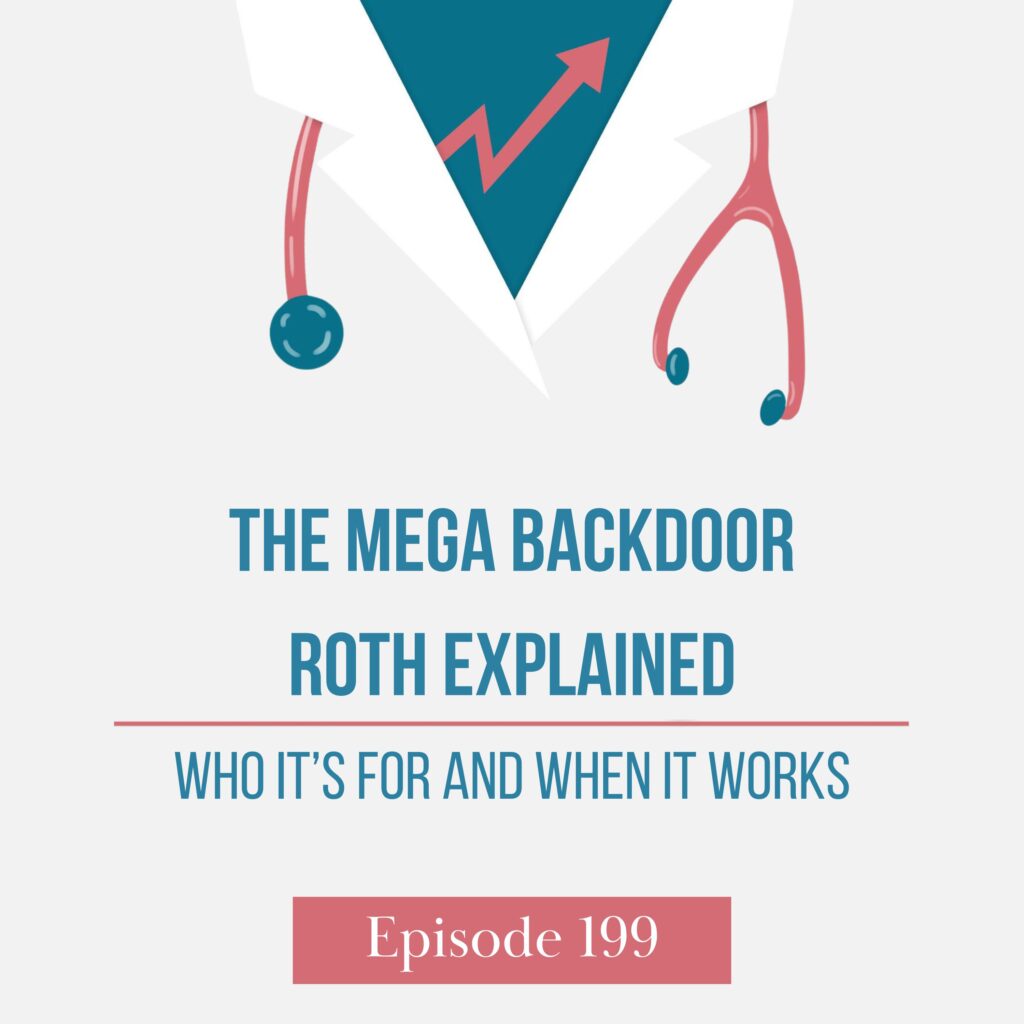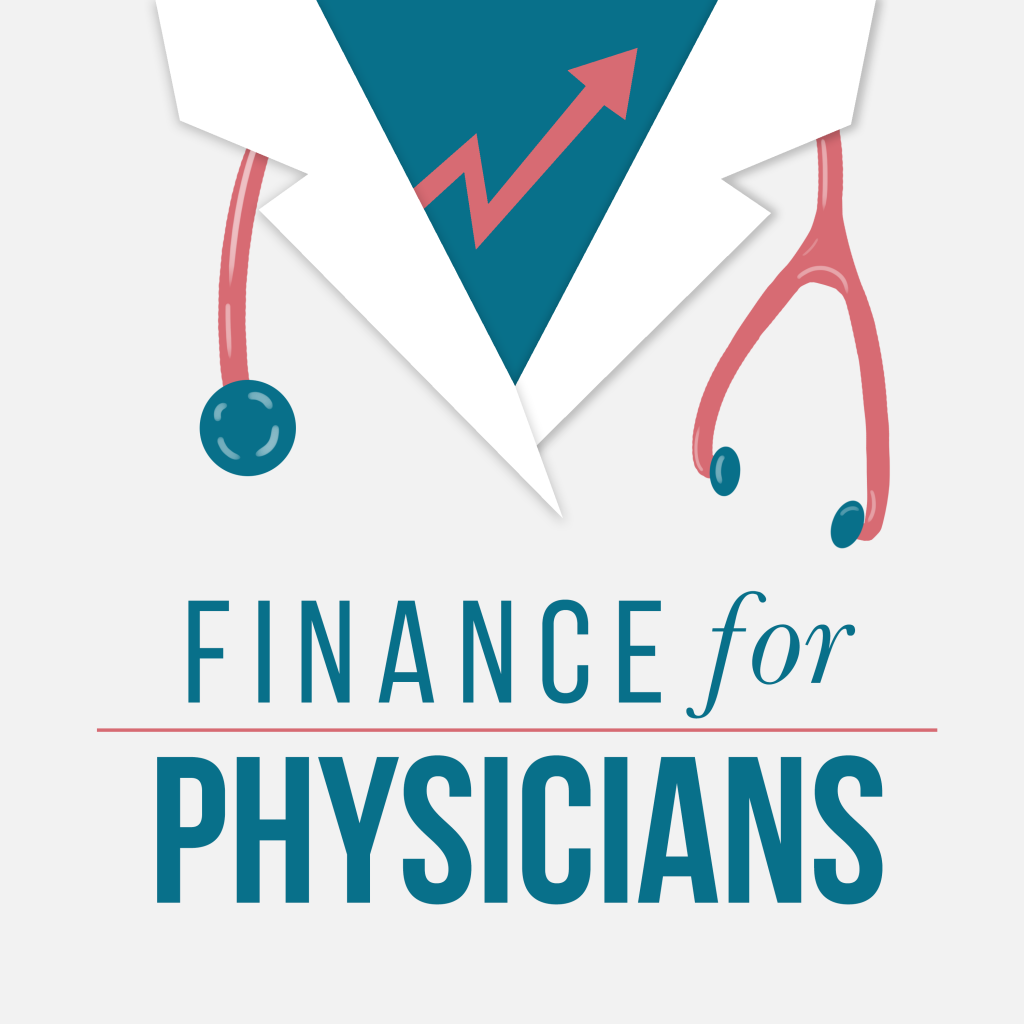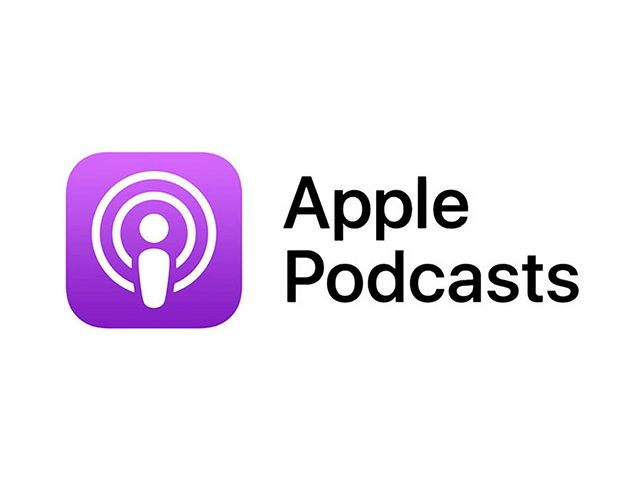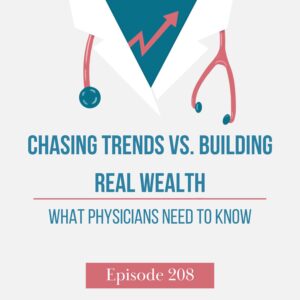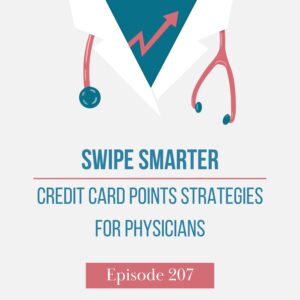Is the mega backdoor Roth the ultimate tax shelter—or just a complicated headache?
Today we are joined by Jeff Wenger to discuss this lesser-known strategy, breaking down how it works and when it makes sense, especially for high-earning physicians.
Listen in as we walk through the four key contribution “buckets” in a 401(k), the pros and cons of using after-tax dollars, and what makes the mega backdoor strategy so unique (and often underutilized).
You’ll learn who this applies to, the gotchas to watch for, and why more isn’t always better when it comes to tax strategies.
—————————————————————————————————————————
Transform your financial outlook today! Access our exclusive free resources for physicians and conquer financial stress. Access here.
P.S. We value your opinion! Share your thoughts and insights with us. Your feedback helps us improve and tailor our content to your needs. Click here to give us a piece of your mind.
Links
- Vitals Check: Your Money Game Plan for Post-Residency Life course link: https://courses.financeforphysicians.co
- Connect with me on my LinkedIn
- Contact Finance for Physicians
- Finance for Physicians
- To schedule a call with one of our awesome planners, book HERE.
Full Episode Transcript:
Jeff Wenger: If you’re maxing out everything with your regular employer, now you cannot also do your employee limit with your own plan.
Daniel Wrenne: Like your $50,000 independent contractor.
Jeff Wenger: Right. So that $23,500 Roth or pre-tax limit—that is for you personally among all plans. So if you’ve already used that with the hospital that you work at, you cannot also put that into your own 401(k).
Welcome to Finance for Physicians, the show where we help physicians like you use money as a tool to live a great life. I’m your host, Daniel Wrenne, and I’ve spent the last decade advising physicians on their personal finances with the mission to help them understand that taking control of their finances now means creating a future where they can practice medicine where, when, and how long they want to.
Daniel Wrenne: Jeff, how’s it going, buddy?
Jeff Wenger: Great. How are you doing today, Daniel?
Daniel Wrenne: I’m doing good. I just look forward to our conversation about the—I’ll let you say it. This is a good—
Jeff Wenger: Oh, the mega backdoor Roth.
Daniel Wrenne: The mega backdoor.
Jeff Wenger: Mega, mega, mega.
Daniel Wrenne: Yeah. It’s a big deal. Maybe most of you guys hopefully have heard about the backdoor Roth IRA. And it’s like in the same family tax wise, but it’s mega. So we’re gonna talk about what that is and how it works. We were catching up before this, and we’re gonna try to stay high level because these topics can get into the weeds pretty easily, right, Jeff?
Jeff Wenger: Yeah. And I’ll tell you what, it’s hard not to get excited about something with the title Mega.
Mega backdoor Roth, and I dunno if you knew this about me, Daniel. I actually started off as a CPA, an accounting major in college.
Daniel Wrenne: I didn’t know that.
Jeff Wenger: Yeah. We had an accounting club and we made t-shirts. The t-shirts said, “Accountants aren’t boring people. We just get excited about boring things.”
I don’t know if the language “mega backdoor Roth” just we get excited about boring things or if it’s just amazing. But when you put “mega backdoor” in front of a financial planning topic, like nothing gets me more jazzed than that type of language.
Daniel Wrenne: Yeah. It’s pretty sweet to save taxes.
Jeff Wenger: Yeah, you could say it’s mega, it’s amazing.
Daniel Wrenne: Yeah, it’s pretty. Yeah. Mega’s pretty cool too, so it’s cool to say it, but we gotta understand it too. So we’re gonna hopefully give you guys a little bit of a high level overview of how it works, like I said. So maybe get you excited about it, but also make sure you’re understanding how it works, when it’s applicable, that sort of thing.
And then always, since we’re gonna be—this ties into taxes, make sure to always consult your accountant anytime we’re talking about taxes. Like I said, this can get pretty complicated pretty quick, so always talk to your, hopefully your accountant is excited about this kind of thing too, so they’ll be excited to talk about this with you.
Jeff Wenger: Oh, absolutely.
Daniel Wrenne: Maybe a good starting point is, let’s compare it to the Roth—not the Roth IRA, the backdoor. Just the plain Jane, not the mega backdoor. The plain Jane regular backdoor Roth IRA.
Jeff Wenger: Oh yeah. So some of our audience is probably familiar with that Backdoor Roth IRA option where once we hit a point where income is too high to qualify for any tax deduction, you could put money into an IRA. Then convert that money to a Roth IRA.
So you can’t directly contribute to the Roth. You can’t get a deduction on the regular IRA, but you’re still allowed to convert, and that makes it a tax-free contribution to the Roth and tax-free growth on that forever until you take it out, or I guess until you die, and then 10 years after that, then your heirs have to take it out.
Let’s not get into that. That gets complicated too. Inheritance rules. But that’s the idea is you’ve got this tax-free pot of money that can be growing, and with the Roth IRA, every year, there’s a limit on that for how much an individual can put in. And that goes up with inflation each year in increments of $500.
In a given year it may not actually go up, but once it gets to the point where it gets to the $500 increment, they’ll increase that with inflation.
And right now that number is $7,000 for anyone under the age of 50, right?
Daniel Wrenne: Yeah. Catch-up age.
Jeff Wenger: Yeah, the catch-up age, and $7,000 per person can go in there. And that’s what you can do, get tax-free money where you couldn’t do it before for growth. And I think comparing this mega option where this becomes mega, it makes, what do you think of mega?
Daniel Wrenne: Better be a lot bigger than $7,000 or $8,000 the regular boring backdoor Roth IRA. I imagine that means it’s a way bigger potential contribution, right?
Jeff Wenger: Yeah. So I actually have one family that calls this the “megalodon backdoor Roth.” And when you say megalodon, now you’re picturing a giant dinosaur, right?
Daniel Wrenne: Yeah. Giant tax saving.
Jeff Wenger: Yes. And so that’s where this comes into play is just the potential size of how much you could do so with an IRA, it’s $7,000 and then with inflation, it’ll go up or down or it’ll go up.
Actually, I don’t know, Daniel, does the IRA contribution limit go down if inflation were to go negative?
Daniel Wrenne: I don’t know. That’s a great question.
Jeff Wenger: Yeah. There’s a what if that’ll never happen, but.
Daniel Wrenne: You never know.
Jeff Wenger: But with the mega backdoor Roth, it is now using the 401(k) account limit, which for an individual under the catch-up age is $70,000 instead of $7,000. So 10 times the size. Yeah. And that’s where this mega option comes in.
Daniel Wrenne: Yeah. 70 sounds mega compared to 7. That’s pretty mega. 10x.
Jeff Wenger: Yeah.
Daniel Wrenne: The tax shelter.
Yeah. I guess first of all, you gotta have $70,000 to be saving or want to save that much. So if you’re listening and you’re like saving 7, then no need to. Worry about it at least right now. For those of you saving a lot, that’s a good, like starting point. It’s especially beneficial for the more you’re saving, but there’s a lot more qualifiers.
Okay, so backing up a little bit. 401(k), maybe you could have probably good to clarify I’m thinking of a 401(k) and then you just said backdoor Roth IRA and now you’re saying 401(k). Like, how in the world are we switching. What’s the overlay of those two things?
Jeff Wenger: Oh, yeah, so this is basically applying that backdoor Roth IRA process, but on a grander scale.
Where in an IRA, you basically—actually, I guess you have the same types of contributions overall except for employer contributions as you would in a 401(k) as options. But in a 401(k), there are several types of ways that money can go into that plan.
I think most of us initially think of the money I put in.
The employee contribution that can go into that, and that’s the $23,500 number. Again for without—
Daniel Wrenne: 2025 number?
Jeff Wenger: Yeah, for 2025. And that’s without catch-up or anything? Not the condiment catch-up, but without the older, age catch-up contribution, and that $23,500, you usually have two options for that.
That is, one, to make it traditional or pre-tax, where it reduces your income by the amount that you put in.
And often that’s the option we want with a lot of these plans where we want to reduce our current income when we’re in higher earning years at higher tax rates. The flip side of that is you can usually also have the option for a Roth contribution, so no deduction this year.
No deduction when you put the money in, but it will grow tax-free. And on those, there are no income limits, like with the IRA where you have to, if you’re over a certain limit, like you can’t do one or the other, those are usually your choice.
Daniel Wrenne: Yeah.
Jeff Wenger: And then, yeah, so those are what we normally think of.
I think when we think of “how much I can put into a 401(k)?” Then there’s also the employer contribution, right? And that’s where, we as financial planners Dave Ramsey, all the great advice out there is when the employer has a match, like you wanna put in enough to get the match anyway, it’s free money, it’s comes from the employer, that type of thing.
The employer amount can be up to 25% of what you are paid, what your salary is from your employer. If you’re self-employed, it’s a different calculation, but that is usually then that is possible from the employer. Now some, not all employers are giving 25%.
Daniel Wrenne: That’s the max, max, max, max?
Jeff Wenger: That’s rare, right?
Probably more often you’re seeing somewhere in the 4%, 5% range, I’d say. But that is another portion, a contribution that could go in that employer contribution. But the actual account limit, like we said, between employee and employer, is $70,000 right now.
Daniel Wrenne: Okay. Recap. So you got the traditional 401(k), which is pretax.
Jeff Wenger: Get a deduction.
Daniel Wrenne: Tax me later. And then you got the Roth, which is tax me now or after tax contribution, and then it’s tax free later. So that’s tax me now. And then you got the employer part, which is separate, obviously. You’re not con contributing to it, and that can be up to 25% of compensation if you’re employed, and most of the time that’s pre-tax. I guess it technically doesn’t have to.
Jeff Wenger: Usually that’s changed with the options recently. It can be employer Roth contributions now, but.
Daniel Wrenne: And so that’s the employer bucket. we’re talking about three buckets so far.
Roth, traditional, and then employer. And then the other thing is it combined all those together, the limit for all that is 70, that’s 2025 numbers. Those all these numbers change each year, but the current max. So that would mean if you add all those three buckets up together, it needs to be 70 or less.
Jeff Wenger: Right. But that brings us to there is another type of contribution, a lesser-known type of contribution. That is the employee can do voluntary after tax. Which has no deduction and the growth on it is taxable.
Daniel Wrenne: That sounds terrible.
Jeff Wenger: Yeah. On its own, like this is not a great deal to do voluntary after tax contributions because you don’t get a deduction, but the growth is taxed as regular income when you take it out later.
So that’s not a good deal, but a regular IRA where if you don’t get the deduction, if you convert it to Roth, now the growth is tax-free. This can be an option in a 401(k) as well, and that’s where we can get to larger amounts of Roth dollars in the end, which is yeah, can be a great option. Yeah.
Daniel Wrenne: Yeah, so that’s a fourth bucket is the after tax bucket and if they just offered the after-tax bucket, the fourth option for you to put in more on top of all those three numbers, it still falls under that $70,000 numbers still applies, but it’s a way for you to put away more than what’s the limit now for employees?
Jeff Wenger: $23,500.
Daniel Wrenne: Yeah, It’s a way for employees to put above and beyond that through that fourth bucket and not technically going through your employer, but if all they offered was the after tax bucket, it’d be like “Eh.” That’s not that great because it’s after tax and taxable. Normally, it’s if it’s after tax, like a Roth and it’s tax free.
So this is not near as good as Roth. It’s ’cause it’s taxed as it grows. So they have to—There also has to be the ability in order—you have to have that fourth bucket, but then also you have to have the ability to convert it.
Jeff Wenger: To turn it into Roth. Otherwise there’s some niche cases where it’s still valuable to do that, but in general, it’s not a good plan to have after tax money, without a way to make it Roth.
Daniel Wrenne: And usually, almost always. So these have to be. Your employer has to like, decide to add these plan options. So normally when they add after tax, they kinda like in tangent with it, add the ability to do Roth conversions.
Jeff Wenger: Yeah, I’d say, yeah. Who does it apply to? There are some, just a normal employer has these options in some plans.
It’s kinda rare. I mean it’s not a unicorn type of rare, but when they’re in those plans, usually there’s the option to convert it within the plan or to get it outta the plan.
Daniel Wrenne: You’re talking about. It’s kinda rare for companies to offer this whole mega backdoor off inside of their plan.
Jeff Wenger: Yeah, most of the time, most companies are not gonna have that voluntary after tax provision in there.
Daniel Wrenne: But I think they’re increasing. I don’t know, I would say one out of 20 maybe. I don’t know.
Jeff Wenger: Yeah, I guess I didn’t do any research on it, but anecdotally, I was gonna go with about 5% maybe of employers.
Daniel Wrenne: Yeah. That’s exactly the same.
Jeff Wenger: I know one out of 25%, right?
Daniel Wrenne: Yeah. Perfect. Yeah.
Jeff Wenger: 12 and one a dozen of the other.
Daniel Wrenne: It does seem and every once in a while I’ll hear of families we work with. I got an email a couple weeks ago. Somebody’s “Ah, our employer started doing this mega backdoor Roth IRA thing,” and they just sent an email out announcing it.
So that’s the first thing is to check to see if your employer offers it. And then if you’re, I guess if you’re involved in the company, you could kinda throw out that tidbit of a potential thing to look at, like maybe add the provision to your plan. That would be cool. Or at least look at it.
Jeff Wenger: The employers that this shows up in tend to be large employers.
Daniel Wrenne: Yes. Or they’re very savvy—personal finance savvy private practices.
Jeff Wenger: Yeah. Cause with smaller practices, fewer owners or fewer employees compared to high income people, there are testing things that go into this when you have employees included.
Yeah. And so it is just the larger companies, more likely. And then if you’re really seeking to get it in there as a smaller, smaller can be, you could still be, making tons of money or tons of money coming into and out of your company, but just smaller compared to the number of employees overall there.
Daniel Wrenne: Yep. So if you’re employed and you’re saving a lot or you want to eventually save a lot, definitely worthwhile to check to see if your employer offers. Sometimes you could ask to see if they offer after tax 401(k). I’ve found a lot of times the employer offers it, but they don’t realize they offer it, or people in HR don’t actually realize they offer it.
So you could ask for, you could ask if they offer after tax 401(k) or like in your benefits booklet or retirements booklet you could search for after tax. It’s not always certain that’s an indicator, but that’s a good indicator. And then also if there is after tax, then you want to make sure that there’s the Roth conversion option and sometimes that Roth conversion option, the best case is when they auto automatically convert it to Roth 401(k) for you.
But sometimes you have to manually convert it or call them every, so often to make sure it’s getting converted Roth.
Jeff Wenger: Yeah, more and more of those are adding the auto conversion. But yeah, if you’re not, then once a year, maybe as long, as much as often as you want to do it or the plan allows, you can, but if you have to call in, it’s usually not like the most fun thing you’ve ever done, so I think once a year or so, it’s probably good maintenance on that.
Daniel Wrenne: Yeah.
AD BREAK
Daniel Wrenne: Hey guys, quick break here to let you know about a new project we’ve been working on that we’re really excited about. We’ve created a self-paced course just for physicians making the transition from training into practice.
It’s called Vitals Check: Your Money Game Plan for Post-Residency Life. This course is not designed to turn you into a financial professional. Instead, it’s about helping you become an expert in your personal finance, so you can make confident decisions about things like housing, student loans, investing and more.
We’ve made it super practical and interactive with short video lessons, a digital workbook and tracking tools to help you actually do something with the information and you’ll be learning from the same great financial planners who’ve joined me here on the podcast: Jackie, Heather, Jen, Jeff, and Hugh sharing their real world knowledge on the topics they care most about.
The course launches next month, but you can join the waitlist now at courses.financeforphysicians.co. We’ll also make sure to include that link in the show notes so it’s easy to find.
AD BREAK END
Jeff Wenger: I wanted to go through a quick example of what this might look like. Like how much money could you possibly get in on a normal setup.
So I think a lot of the employers have 4% kind of employer match. Yeah. Something that goes in there. Maybe a little known fact is most of the time the compensation that you have that can be matched is limited. So you could be making $700,000, but not all of that would be matched. This year, for most plans, that would be limited to about $350,000.
Daniel Wrenne: So that means if their match is 4%, they’re only putting in 4% up to $350,000. So if you’re making above $350,000, you’re not getting matched on above $350,000 no matter what.
Jeff Wenger: Right. So in this example, $350,000 times, 4%, $14,000 from the employer, not bad. Not bad. And then you can put in $23,500 yourself.
But now we’re up to $37,500, and the possible limit of that account is $70,000 from your employer. And so the potential there is if you have that provision, you might be able to get in another $32,500 into a Roth account where it’s growing tax-free. So if you are an employee with that option…
Daniel Wrenne: That’s a home run right there.
Jeff Wenger: Home run if you’re saving beyond those retirement accounts anyway, or if you needed to save, wanted to save. That’s a great option.
Daniel Wrenne: Yep. That’s where it earns the mega back door off. The mega part comes into play. That’s big tax shelter you would otherwise not have.
Jeff Wenger: Yeah, but like you were guessing. I was guessing here, 5% maybe that applies to like that have that option, even have the option and then out of that you have to actually fit your circumstances to wanna do that.
Daniel Wrenne: Yep.
Jeff Wenger: I think the other type of person that I see that it applies to more often might be somebody that is employed but is doing 1099 income with separate services on the side.
So maybe you’re employed as a physician and we’re earning and maximizing our 401(k) on one side. And then you’re doing consulting or court cases or all sorts of things on the other side, maybe you’re making $50,000 a year in 1099 income. Again, your options now are if you’re maxing out everything on with your regular employer, now, you cannot also do your employee limit with your own plan.
Daniel Wrenne: Like your $50,000 independent contractor?
Jeff Wenger: Right. So that $23,500 Roth or pretax limit, that is for you personally among all plans. So if you’ve already used that with the hospital that you work at, you cannot also put that into your own 401(k). But if you are a separate employer, so you’re your own employer…
Daniel Wrenne: This could be like locums or doing an independent contractor. They’re writing you checks and not withholding taxes. It’s getting paid in your name individually or an LLC that you have. That would be independent contractor or self-employed income on the side.
Jeff Wenger: Exactly. Exactly. And so if that is the case, then in most cases you are, that’s a separate employer. So you’re your own employer as an independent contractor on one side, and then maybe you’re employed by your practice or the hospital or somebody else on the other side. Each employer plan gets that $70,000 total limit, but you, as an individual, only get the $23,500 for an employee.
So on your own plan as an independent contractor, you’re both employer and employee. On the other side, you’re only the employee with your practice. And so if you’re maxing out everything with your day job, we’ll call it that your day job practice your hospital—
Daniel Wrenne: Hospital is your day job.
Jeff Wenger: Yes. You are not the owner there.
Then you are limited to a—there’s a calculation that goes into this. It’s not exact, but let’s give you the rule of thumb here, about 20% of your self-employment income is what you are limited to putting in and getting a deduction on in your solo 401(k). So in that example, you made $50,000 on the side.
You could put in about $10,000, but then there’s this other $40,000 that you made and you’re like, man, it would be nice if I could get some tax benefits here. That’s where you could create your own custom solo 401(k) plan, and there are a lot of services out there that can help set you up with that. You can make that provision in your own plan where you can do voluntary after-tax contributions and convert them so you could get closer to saving that full $50,000 into your plan.
So $10,000 Roth, the other 40. Or $10,000 pre-tax, the other 40 Roth.
Daniel Wrenne: Yeah. So all $50,000 being the limit.
Jeff Wenger: Yeah. And that’s not gonna be exact ’cause of taxes and IRS stuff, but just for our example, I think that gets really close.
Daniel Wrenne: Yeah. So if you’re listening and you’re like, “I got some solo, I got some independent contractor pay, and I’m saving a ton.”
And it, you’re like, this sounds like a pretty good tax shelter, but does that mean if I am saving a ton and I have an independent contractor side hustle, we’ll call it, and then I’m employed by the practice, does that automatically make this a worthwhile thing?
Jeff Wenger: Oh, there’s nothing automatic in life, Daniel.
I wish it was. I’d say, if you are saving beyond that you match those qualifications. It’s at least worth looking into and it’s likely to benefit you. But there are a few gotchas that I think you made reference to.
Daniel Wrenne: There’s a lot of them actually.
Jeff Wenger: There are a lot.
Daniel Wrenne: But it gets into tax and compliance. So when you’re creating a 401(k) as an independent contractor, you are responsible for compliance and tax and making sure the plan’s right and all that. Or you can hire people to do it for you. It is simpler when you’re just one person, but there are still rules you have to abide by and make sure you check all the boxes, and like we can throw out some, there’s some control group rules, affiliated service group rules.
Those are like compliance plan, compliance rules and those can sometimes come into play with solo 401(k)s or, yeah, that’s what we’re talking about here. Solo 401(k)s and then there, but there’s services you can pay that will do the due diligence to make sure. There’s also strange rules with the 403(b) there, where they won’t, that this all blows up if you have a 403(b) at the main job.
And then there’s testing with your, which is not a big deal, like plan testing that’s simple. If it’s just one person, but that can cause, I mean if you’re an independent contractor and you’ve done like, say you employ your spouse or something, or you have a strategy where you’re paying your kid or whatever, blows that up, can cause problems.
So you can’t. There’s a lot of check boxes to go through. I think we mainly want to put this on the radar is a thing to look into in certain situations. And it can be great if you’re in that part, that’s the best situation for it typically is where you, either your employer’s really generous and has a great plan.
Or you have the employed a hundred percent employee and side hustle independent contractor on the side. And you’re, that can be a really good setup as well, potentially. But there’s another scenario. We’ve oftentimes these 401(k)s come into play we haven’t mentioned yet, which would be what if I’m completely locums?
Jeff Wenger: Oh yeah. If you are completely locum.
Daniel Wrenne: Why haven’t we brought that up yet?
Jeff Wenger: That’s a good question. So I think that’s gonna be a little more, a little bit more of a nuanced approach to which option really fits you. But I’d say in general, the locums physicians that we’ve seen we work with are making all of their money through locums.
So if that’s the case or of majority is coming through locums and not much for very little W2 in general, we’re looking for all the tax deductions. We can get there, and so we’re trying to stay often below a certain limit, a certain threshold for business tax deductions, QBI, a little buzzword there, but we want all the pre-tax deductions we can get.
So if you have enough income, $200,000 roughly, if you’re doing is a good range, a good ballpark to say you could actually get the full deduction without having, yeah, the $70,000 all deducted against your taxes without complicating your life with after tax.
Daniel Wrenne: That’s why it’s if you’re a physician, you’re completely self-employed?
More often than not, you’re making more than enough to fully fund that $70,000 limit. But we started at the very beginning talking about the limit, the buckets, the three buckets. The three most common buckets are traditional or pre-tax, 401(k) employee, Roth or after tax-free employee contributions or employer matching or profit sharing.
Those are the three common buckets. So when you’re self-employed and you make plenty of income above $200,000 roughly, you typically can pretty easily max out at that collective limit, which is 70 in this year. Just by doing those three buckets and it’s much it’s definitely much simpler to just stick with those three and call it a day.
But there are some exceptions. If you’re below, I guess 200 there.
Jeff Wenger: Yeah. I guess if you are. Fully self-employed, that’s where most of your income or all your income is coming from. You probably want to think a little bit more deeply about this overall. Like it, it could fit you, it might not.
Yeah, that’s likely. And so I guess if you are, I’m gonna call you lower income, but let’s say you’re doing all locums. You’re making $250,000 a year, and that’s your family income, and you’re still wanting to save $70,000 a year. That’s a scenario where you might still want because all these tax things going on in the back.
But but these are kind of niche cases, right? Where if I’m making $200,000 a year, saving $70,000 is often a very difficult number. So not likely to apply as much.
Daniel Wrenne: Yeah.
Jeff Wenger: Yeah.
Daniel Wrenne: And I think most common, the typical family I’m working with. Is able to save the amount they need to save for retirement through a little simpler, more straightforward tax shelters.
And they don’t need to use the Backdoor Roth or the Mega Backdoor. The Mega Backdoor Roth. That’s like the typical, but like there’s outside either higher income or big time saver. Plus some self-employed income where this kind of thing’s fantastic because if you’re saving a lot, you might as well get these extra unique tax benefits.
Jeff Wenger: Yeah. We talked real quick about a few gotchas. You brought up a few.
Daniel Wrenne: Yeah, we got more.
Jeff Wenger: So one, I was thinking, I think I’m gonna put you on the spot. Oh goodness. But I think you’re pretty familiar. Form 5500. Go.
Daniel Wrenne: Yeah. Shoot. You want to start another podcast? Let’s turn this into another show.
That’s just the 5500 is a form you gotta prepare each year if you have a 401(k) over a certain level, it’s $250,000 in the current laws. It’s if you’re above $250,000 balance in your 401(k), not as an employee, but as an employer. If you are in a business or you own a business, even if it’s like you self-employed and you have a 401(k) that’s tied to that business and it’s over $250,000 balance, you have to do this annual 5500 reporting. So that’s a big deal.
Jeff Wenger: You did a wonderful job of summing that up, filing a form 5,500 can be a gotcha. You gotta do it if you get to that level.
Daniel Wrenne: The thing is, I don’t know, this is probably the biggest downside in my opinion with this strategy, is you start to add more and more things. It’s like more money, more problems I guess, but most of you guys listen are probably super busy already, so we’re adding more things to your list. So it can get a little overwhelming to not only add the things we’ve already talked about, but then also add this form that you have to do every year. The form is actually pretty simple.
Everybody listening, it could easily figure it out a little time.
Jeff Wenger: It’s just easy to overlook.
Daniel Wrenne: It’s very easy to overlook, and it’s different deadline. A lot of accountants, you might even have an accountant and you’re like, oh, they’ll just do it. And you email your accountant and they’re like, “I don’t do those.”
And you’re like, “Oh.” Some of them do, some of them don’t. But then you have to have an annual reminder on your calendar, which is not a big deal. Or you do it, actually say you do remember to do it, or you get prompted. You just are doing it quick and you miss something. Or somebody I worked with like e-signed it or something like that.
There was some unique thing that he did that. That they didn’t process it. ’cause they didn’t, it didn’t meet their standards. The other thing about the 5500 is the penalties are very steep for some. They have very aggressive penalties on 5500. It’s like missing deadlines or incorrect filings. So you just have to make sure you’re doing that and it’s an easy thing to do, but it’s easy also to miss it or mess it up.
Got any other gotchas?
Jeff Wenger: A couple that you referenced. We’re not gonna go in depth on them, but just to be aware that you might wanna look more into this before say, oh yeah, I really wanna do a mega backdoor Roth. If you have a 403 B with your regular employer, now we talked about that $70,000 limit for each employer.
Those get combined so it takes away some of the options there. It might just condense how much you could actually do. So you wanna look at if that’s actually worth it for you. You mentioned control groups and affiliated service groups. Those get really complicated.
Daniel Wrenne: Yes.
Jeff Wenger: But I think just in your mind, if you’re thinking, “Yeah, I own a good portion of something,” good portion, let’s say.
If you or family members are both owners in different companies in these two, like you’re an employer, like you’re a decent owner of one of your day job, and then also you’re owning this other side hustle, look into that. If you have any ownership percentage, just check that out. And if your businesses are ever intertwined, like if there’s some, basically any relationship that you can possibly think of between your normal job and your side job, look into it.
Daniel Wrenne: Yeah, and that’s an annual thing too, really is the way I would think of it, like annual compliance because like many times it changes. So it’s changed for me, like personally. So say you start a new business or you get involved in another business and com it complete, it can completely change the entire landscape of how all those work.
So the gist of it is you have to look at all the things you’re tied into. And make sure you’re covering all the rules. And sometimes if you don’t meet these tests, they make you combine ’em all into one as if it’s one thing instead of like separate things. So you just have to make sure either you’re paying somebody to do that for you or you’re doing that annually, really, where you’re looking at the all the available businesses and plans and making sure they’re not violating any of these.
The big ones, like. We’ve already pointed out the big ones. So have we scared you away from doing the mega? We were like mega backdoor Roth IRA. Awesome. But scary too.
Jeff Wenger: It is mega. So I think that comes with great power comes great responsibility.
Daniel Wrenne: There you go. Well put. Well put. Did we miss anything, Jeff Anything else to throw in there?
Jeff Wenger: Oh, I mean there are so many layers we can go into, but I think the overview, it’s hard to go any deeper now without getting really boring.
Daniel Wrenne: Yes. And we were trying our best to keep this not so boring. So hopefully we accomplish that. It’s a fun topic. Jeff, I appreciate you going through it with me today, and we’ll definitely see you next time.
Jeff Wenger: It’s a pleasure. Hope you have a mega day.
Daniel Wrenne: Nice.
No guests or clients appearing on the podcast received any form of compensation for their appearance and obtained no other benefit from us. It should not be assumed that every client has had the same experience.



